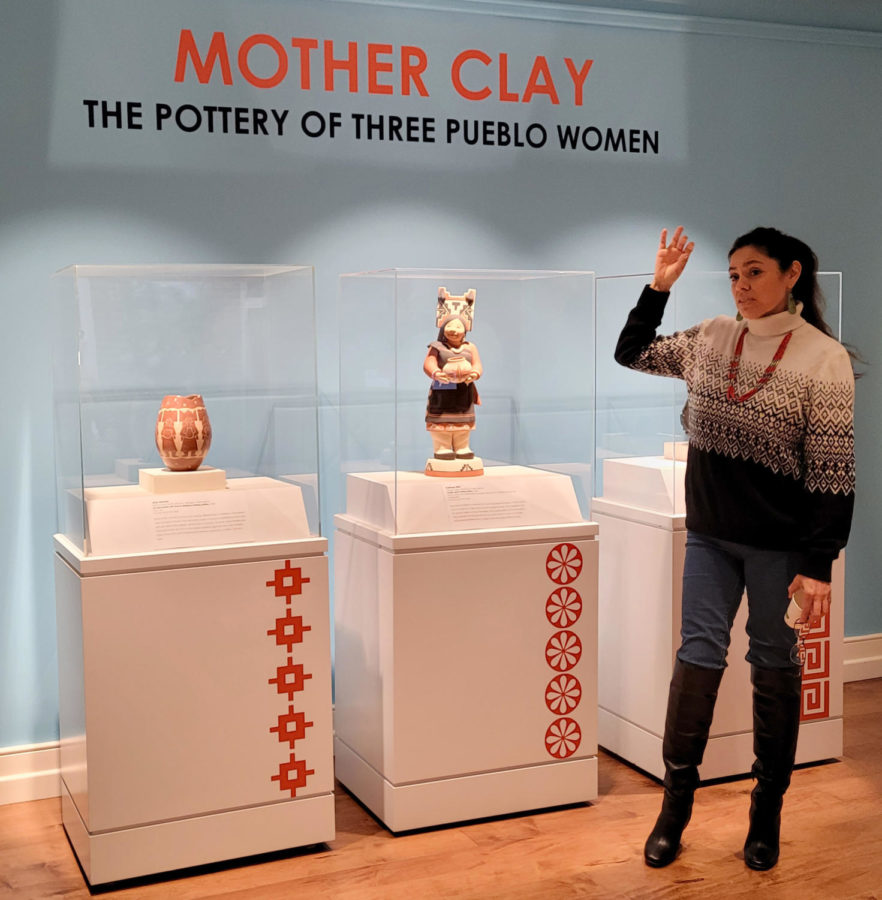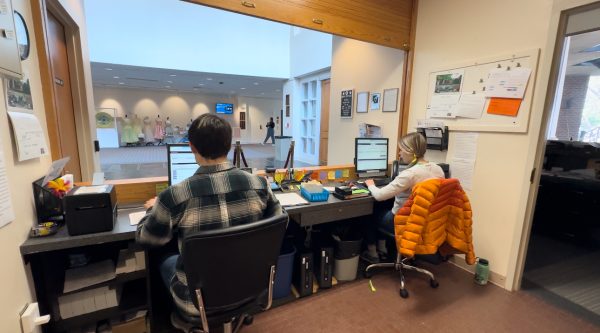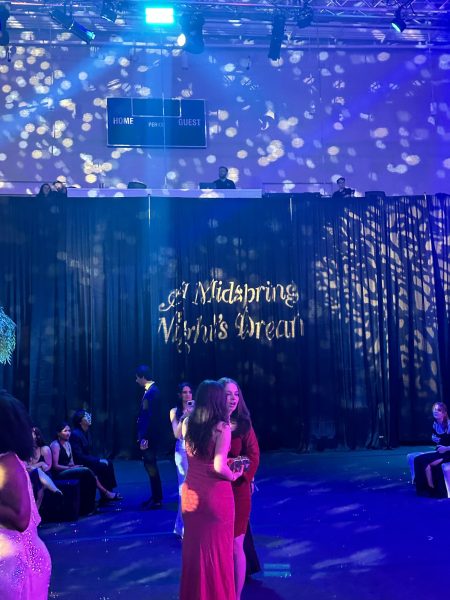W&L museums showcase female artists’ pottery with two new exhibits
The “Born of Fire” and “Mother Clay” exhibits opened on Feb. 1
Kathleen Wall explains her techniques during a gallery tour.
February 8, 2023
The Museums at Washington and Lee University opened two new exhibits on Feb. 1 to display the work of female ceramic artists from the global east and west.
“Born of Fire: Contemporary Japanese Women Ceramic Artists,” exhibited in the Watson Galleries, focuses on the work of women who are forming new ways of thinking about and creating ceramics in the traditionally male-dominated sphere of Japanese pottery. Next door, the Reeves Museum of Ceramics is displaying “Mother Clay: The Pottery of Three Pueblo Women,” a collection of work crafted by contemporary potters from New Mexico.
Tony Chavarria, guest curator of the “Mother Clay” exhibit, explained the importance of clay in Pueblo culture during a panel discussion on Feb. 1.
“Clay is like us. Pottery is like us. We are both born of the earth, and we both have our lifespans,” Chavarria said. “And just like pottery too, we eventually return to the earth. And ideally, you remain an example to the people that knew you and loved you.”
The panel, moderated by Chavarria, invited Judy Tafoya and Kathleen Wall, two artists whose work is displayed in the “Mother Clay” exhibit, to discuss what their pottery means to them.
For Wall, pottery is a connection to the women in her family who taught her the craft.
“My mother was a potter, my grandma was a potter, everybody around me has a traditional knowledge of it in one sense or another,” she said. “Me and so many other Pueblo potters weren’t sat down and given a lesson. We were just around it so much we absorbed it naturally.”
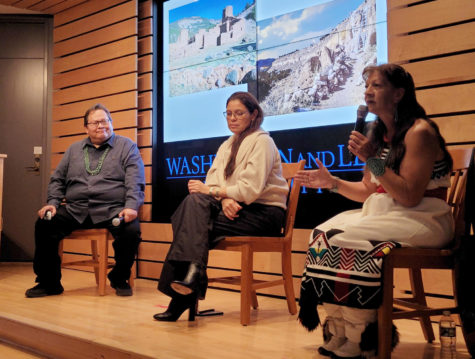
Wall, who is from the Jemez Pueblo, said she was 8 years old when she sold her first piece of pottery, and has not stopped creating since. She explained that her artistry has evolved over the years, especially as she learned from her mother and aunts how to market her work and cope with rejection.
Tafoya is a sixth-generation potter from the Santa Clara Pueblo. She remembers learning from the women in her family, too. She is taking on the role of an educator now, teaching her eight children, along with her grandchildren and other kids in her community, how to make and sell pottery. Tafoya said that because art has allowed her to support her family for decades, she hopes that she can teach others how to make a living from working with clay.
Tafoya’s pottery stands out in the exhibit due to its black coloration. The clay is red before it is fired, but then Tafoya bakes the clay in a fire burning from cottonwood, cedar and horse manure. Once the fire is smothered, the smoke is absorbed into the clay which gives the final piece of pottery a rich black finish.
Wall, who mainly creates human figures, prefers to keep her clay red. She fires it in a kiln so that it looks like skin color on her finished pieces.
Despite the different firing techniques, both artists make their clay in a similar way. They collect pumice, a light and porous volcanic rock, and rocks of clay in local areas and crush them until they have a fine texture. Then they combine the materials in the ratios that their mothers taught them.
“Everything is made, of course, with traditional clay,” Wall said. “So that’s my claim to my heritage, because my mother taught me how to make clay.”
Chavarria, who has over 30 years of experience collaborating with tribes and curating Native American art, said that women are often associated with making pottery because the clay comes from the Earth Mother and is thus a feminine material.
Jody Naranjo is the third artist who has work displayed in the “Mother Clay” exhibit. Although she was not able to attend the panel discussion, Chavarria and Wall discussed her techniques and the pieces that she contributed to the collection.
Wall, who views Naranjo as a friend and mentor, said Naranjo also learned pottery techniques from her mother and aunts.
“We’re all generational potters,” Wall said. “We all have learned from our mothers and we have this prolific lineage with all these amazing artists.”
Naranjo is known for her sgraffito pottery, a term which refers to the technique of scraping intricate designs into pottery after it has been painted, polished and dried. One of her sgraffito pieces depicts women wearing tablitas, or colorful headdresses, during a rain dance.
Wall said that, although it was unplanned, she also crafted a piece of a woman wearing a tablita for a rain dance.
“It’s really fun how we’re all different pueblos and we all speak different languages, but the similarity between Jody’s piece and my piece is pretty uncanny,” Wall said.
The Museums will acquire one piece from each artist when the exhibit closes in April, Curator of Academic Engagement Elizabeth Spear said.
“These acquisitions really mark an important and exciting moment for the museums as we expand the scope of our collections to include a broader array of voices and reflect a wider array of experiences,” Spear said at the panel discussion.
Native American ceramics were displayed for the first time at Washington and Lee in 2018. “Mother Clay” is the second installment of Pueblo pottery at the university and was accompanied by educational events during the week of Jan. 30 such as the Native Allyship Gallery Luncheon with retired professor of Native American art Joel Bernstein and guided gallery tours with Chavarria.
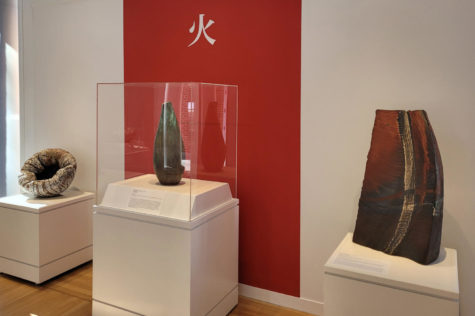
Unlike the artists of “Mother Clay,” the female artists showcased in “Born of Fire” have not learned artistic techniques from their mothers because in Japanese culture, making pottery has traditionally been a career for men. The 15 artists that contributed work to the exhibit have forged their own paths to turn their ceramic work into a livelihood, often shaping new techniques and forms of pottery as they made a place for themselves in the Japanese art world.
The exhibit is on loan from The Crow Museum of Asian Art at The University of Texas at Dallas. The pieces draw inspiration from a range of sources, including wabi sabi, defined as the appreciation of the beauty found in the imperfect and incomplete aspects of nature, and American pop art.
Programming for “Born of Fire” will occur on March 8, but the exhibit is open to the public now and will remain open until April.



